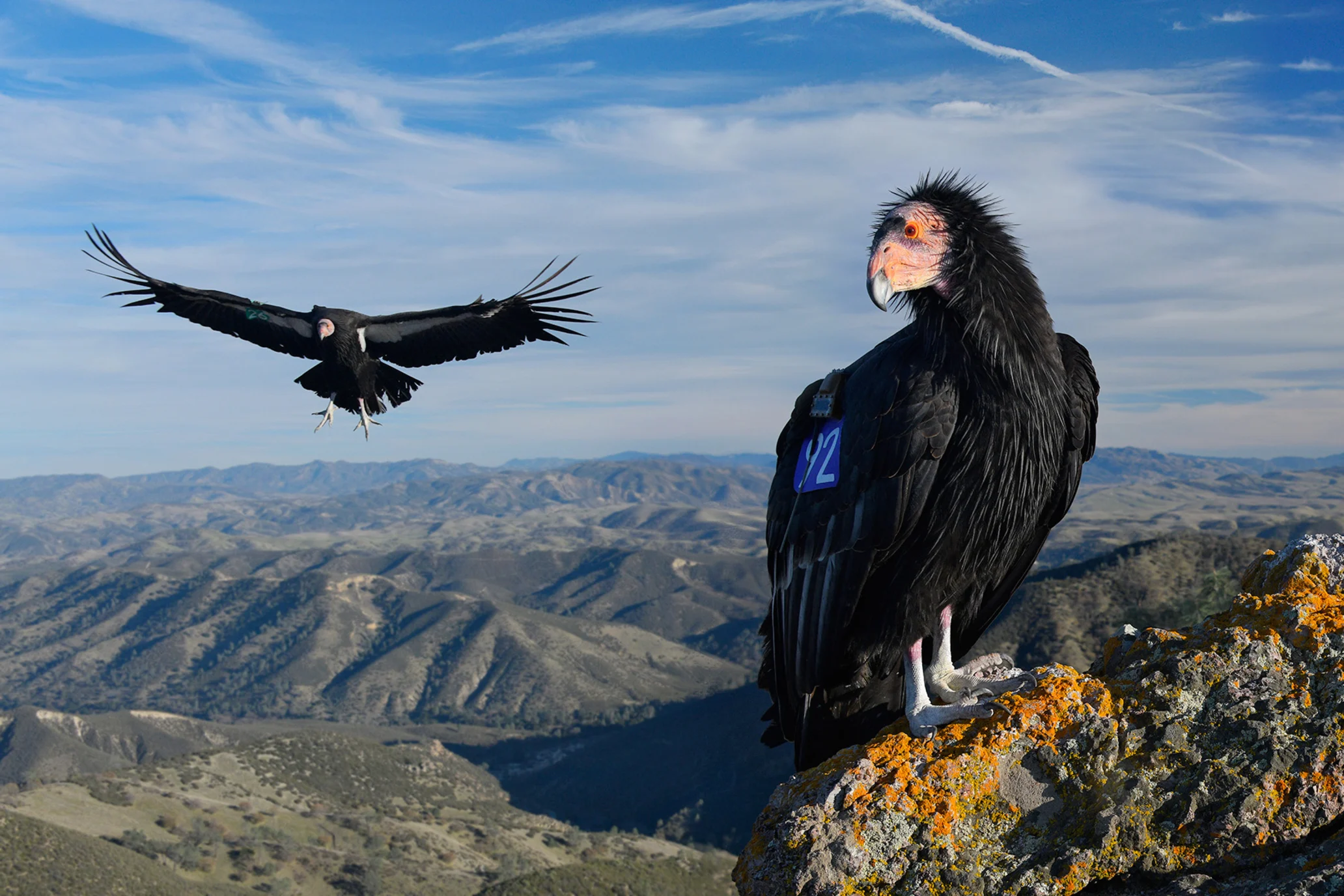California condors return to Mount Diablo
As the California condor population has slowly but steadily increased, birds have begun to return to places that hadn’t seen them for generations.

At one point in the 1980s, the largest flying land bird in North America sat perched on the brink of extinction. The California condor population numbered as few as 22 birds and appeared destined to disappear forever. California condors have made an extraordinary recovery over the past 30 years, however, thanks to recovery programs that began releasing condors back into the wild in the 1990s. Today, there are about 275 of these free-flying birds gliding through the skies of California, Utah, Arizona and Baja California, with more than 160 additional birds living in captivity.
As the condor population has slowly but steadily increased, birds have begun to return to places that haven't seen them for generations. In 2021, a California condor flew into Contra Costa County — northeast of San Francisco — for the first time in more than 100 years. In 2022, another condor was tracked soaring over Brushy Peak Regional Preserve in June, making it the second known California condor in the Mount Diablo area in more than 100 years.
Save Mount Diablo, an accredited land trust based in Walnut Creek, Calif., recently shared news of some special visitors to the Diablo Range: Six condors soared through the skies above Round Valley and Morgan Territory regional preserves, one flying a mile or two west of Mount Diablo’s summit.
“This is amazing news,” said Seth Adams, Save Mount Diablo’s land conservation director. “This is the first flock of California condors to visit Contra Costa in 100 years, and the first record of one flying west of Diablo’s peaks. I started chasing condors 40 years ago and since the recovery program began, I’ve been hoping the birds would reclaim Mount Diablo. Now they are. This kind of good news is happening again and again. But what it really highlights is the importance of the giant Diablo Range as habitat for the birds — 200 miles north-south and 3.5 million acres of high-quality intact habitat.”
Founded in 1971, Save Mount Diablo’s mission is to preserve Mount Diablo’s peaks, surrounding foothills, watersheds and connection to the Diablo Range through land acquisition and preservation strategies designed to protect the mountain’s natural beauty, biological diversity and historic and agricultural heritage. Much of the land Save Mount Diablo is focused on conserving is also potential condor habitat.
Condors like to nest along cliffs and within cliffside caves. National Park Service tracking data revealed condors exploring the northern Diablo Range — which stretches from the eastern San Francisco Bay Area at its northern end to the Salinas Valley area at its southern end — lengthening their flights northward as they flew closer and closer to Mount Diablo.
"We are excited to see more California condors from Pinnacles National Park continue to expand their range as they explore Mount Diablo and surrounding mountains. Several condors are outfitted with GPS trackers and that is how we know when they fly great distances from Pinnacles," said Alacia Welch, the condor program manager for Pinnacles National Park.

California condors remain critically endangered, and threats to their future include lead poisoning, dumped chemicals and other environmental pollutants that can kill condors or keep their eggs from hatching. In 2019, California finalized new state regulations making it illegal to use lead ammunition when hunting wildlife throughout the state.
For more information on condors, visit San Diego Zoo Global as well as the Facebook page, The Condor Cave. You can view images of free-flying condors at Pinnacles National Park.